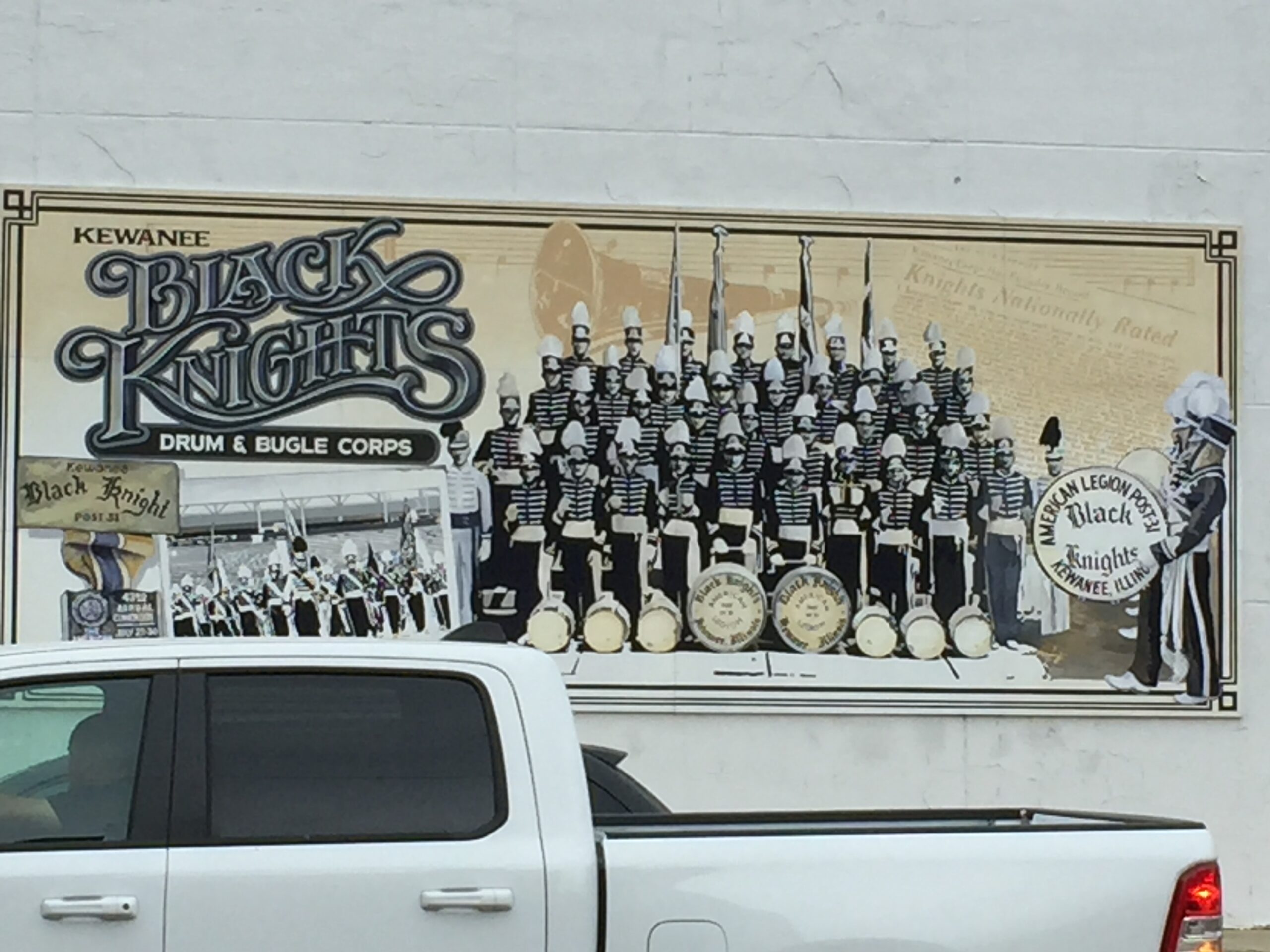Driving through the rolling hills of western Illinois and its tidy farms. All white farms are a thing here:

Summer’s deep greens are giving way to fall’s browns and golds as the vast fields of corn and soybeans ripen. My campground at Johnson-Sauk Trail State Recreational Area is city park-like, with oaks and maples for shade. It is within an easy walk to both Johnson Lake and an unusual round barn. Unfortunately, I’ve missed the weekend when you can tour the barn.
Once I set up, I could not help but notice the camper across from me—except for being a different shape (bread loaf instead of teardrop), every external detail was identical to my T@b. The owners said it had been made by the Dutchmen Company (the company that nüCamp split off from) and that it was called a T@Da! Dutchmen doesn’t make them any more, but you can find used ones for sale. Looking online, I discovered that the interior was also identical to my camper—same cabinetry, same wood trim, sink, range, and bathroom. The same, but bigger! I may have found my next camper!



I was under strict orders from my friends to take it easy after my medical ordeal, but as I settled in to relax with some stitching, I discovered that I didn’t have what I needed to start a new cross-stitch project. When you have a cross-stitch emergency, you have to deal with that right away, so off to Kewanee, IL I went. By great luck, there was a quilt shop in Kewanee that had one piece of Aida cloth, even though they don’t normally carry that (of course, I had to browse the quilt shop offerings, too.)
Then I discovered the beautiful painted murals that were all over downtown Kewanee, depicting historic businesses and organizations. Dunno who did these, but they were GOOD!




When Russ arrived, we decided to eat out, and we went to Cerno’s Bar and Grill in Kewanee, where we discovered an historic bar and fixtures that dated to the late 1800s. The 50-foot bar had been imported from Belgium for the Pabst Blue Ribbon Company, and the lamps, pressed tin ceiling, and stained glass details were original. You’ll be happy to know that the food was as good as the decor, and we left stuffed to the gills.

One last note of interest. These are Hedge Balls:

Also called Horse Apples or Osage Oranges, they grow from Texas north at least as far as Illinois. They range from baseball size to grapefruit size, and are hard, knobbly, and sticky. Locals claim that they repel bugs, and they put them in their basements to keep out cockroaches and crickets. I asked one person what kind of tree they grow on and he answered, somewhat unhelpfully, ”Hedge trees.” I’ve been told they were imported from England, as the wood is extremely hard and does not rot quickly, making them good material for fencing.
A little background: The first time I encountered Hedge Balls, they were in a basket in the middle of the produce section of a grocery in (I forget: Montana or North Dakota). I’d never heard of them. The gentlemen near me didn’t know what they were, and the basket only said Hedge Balls, with a price. It took me quite awhile to find someone working in the store who knew what they were. I’m so glad I didn’t buy one to see how it tasted, because they are toxic! I did suggest that the fresh fruit aisle was perhaps not the appropriate location to display them in.